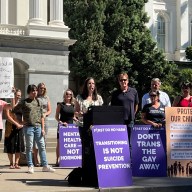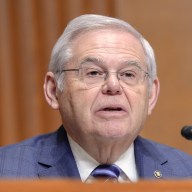By Stephanie Kelly
NEW YORK (Reuters) – After years of steady inflows, the rate for retirement contributions by public pension employees has increased and is expected to continue rising, an effect difficult to produce but helped along by the impact of regulatory reforms, analysts say. To combat increasing employer pension costs, U.S. states enacted pension plan reforms that mainly reduced benefits for new hires and increased employee contribution rates for new hires and current workers. After nearly a decade at 5 percent, the median employee contribution rate increased to 5.7 percent in 2012 and further to 6 percent in 2014, according to a March 2016 National Association of State Retirement Administrators report. The U.S. Census Bureau will release its quarterly report on state and local government public pensions on Thursday.
“For many years in (NASRA’s) data set, the median employee contribution rate held constant despite a number of states passing increases to their employee contribution rates,” said Alex Brown, a research manager at NASRA. Nearly all states have made pension reforms since 2009. More than 35 states have passed increases to required employee contribution rates, Brown said.
Quarterly employee contributions averaged about $10.8 billion in 2015, the highest amount ever, and an increase of 1.39 percent from the 2014 average and 7.69 percent from the 2013 average, according to data taken from the U.S. Census Bureau. State and local public pensions — whose total U.S. membership is about 20 million, according to the U.S. Census Bureau — are primarily funded by investment returns, employer contributions and employee contributions. While the amount of state and local government jobs are both lower than their pre-recession high, NASRA has observed an “uptick” in hiring recently.
LOWER RETURNS EXPECTED
Strong constitutional and statutory constraints restrict changes in benefits for current employees, said Jean-Pierre Aubry, the associate director of state and local research at the Center for Retirement Research at Boston College. One of the only ways that some governments can decrease employer costs is to increase employee contributions, instead of reducing benefits, he said. The 2008 financial crisis still affects public pension systems, Aubry said. The funded ratio — which describes the amount of assets on hand to pay promised benefits — has started stabilizing in recent years and now sits at around 74 percent, he said. The pre-crisis ratio was about 86 percent, he said.
Factors that will predict the ratio going forward are the plans’ ability to pay contributions, benefit cut effects and returns on investments, he said.
Returns, however, are expected to be lower this year.
In mid-June the California Public Employees’ Retirement System, the largest U.S. public pension plan, reported that its rate of return for the 12 months ended June 30 is “likely to be flat.” New York state’s pension fund reported that it earned a return on investment of 0.19 percent in fiscal 2016, its worst showing since 2009. Diane Oakley, the executive director of the National Institute on Retirement Security, said it is not unusual to go through periods of lower-than-expected returns.
“That’s something that typically happens over a 30-year period of time,” she said.
(Editing by Daniel Bases and Matthew Lewis)
Public employees paying more into U.S. pensions, uptrend seen extending

By Stephanie Kelly















